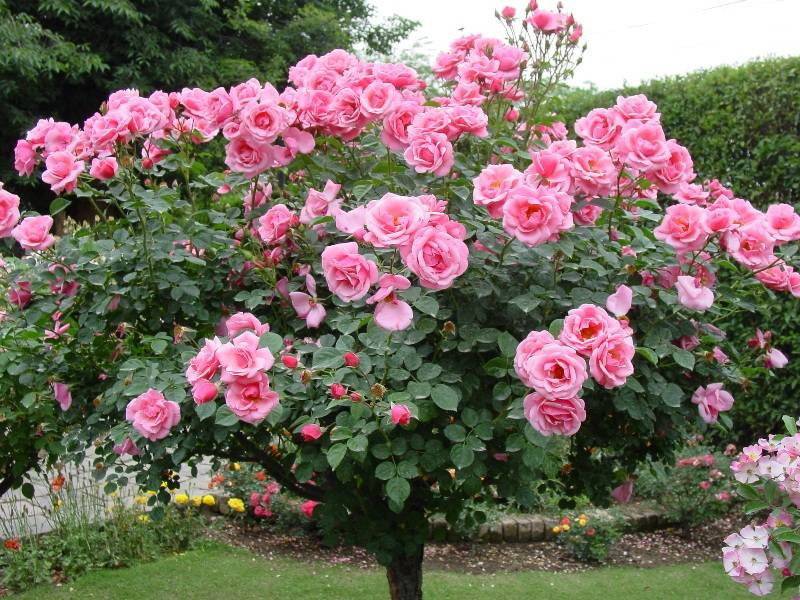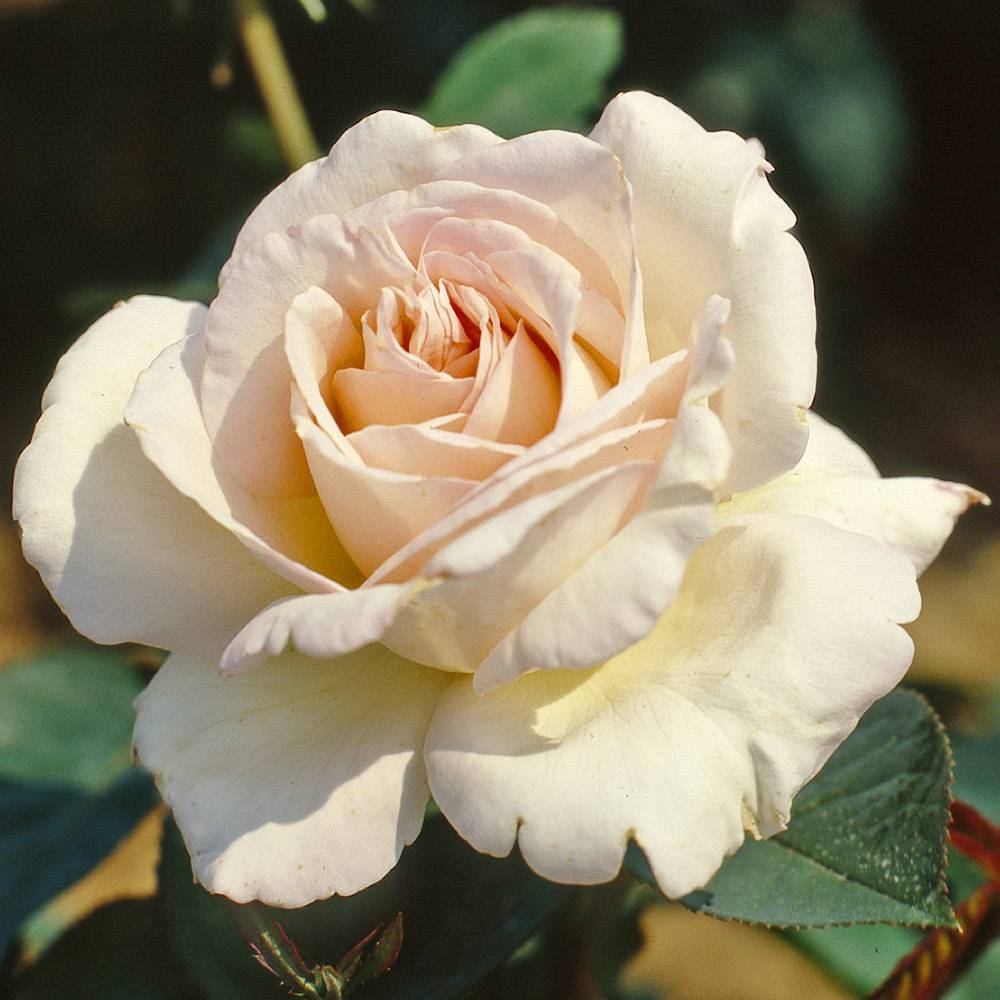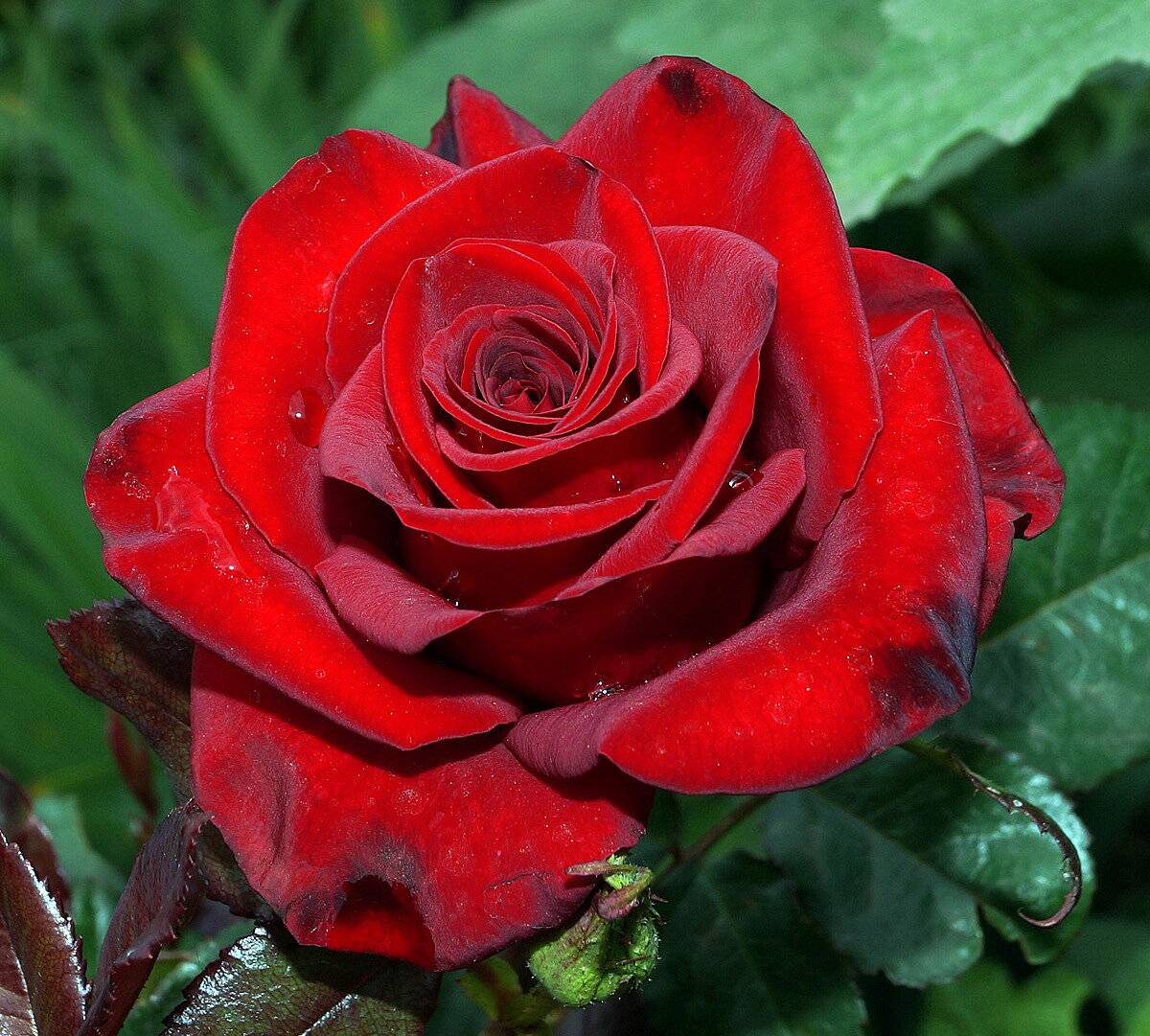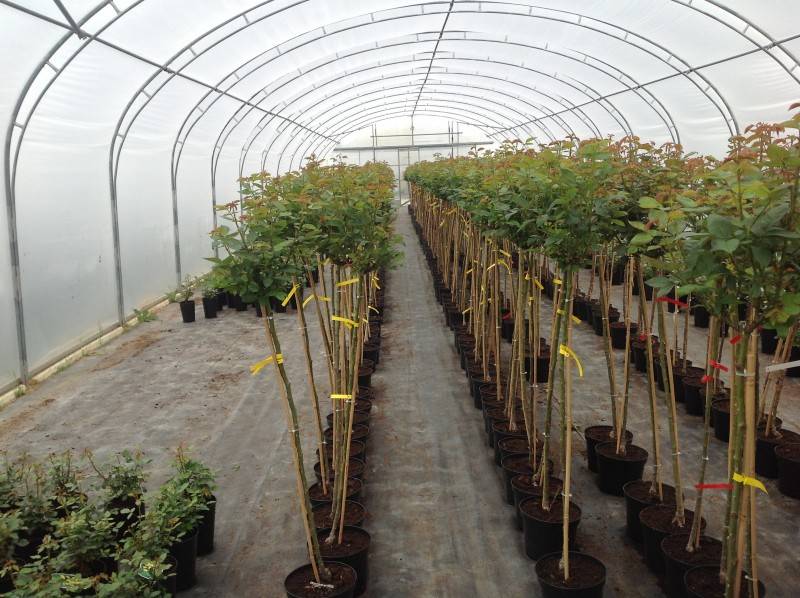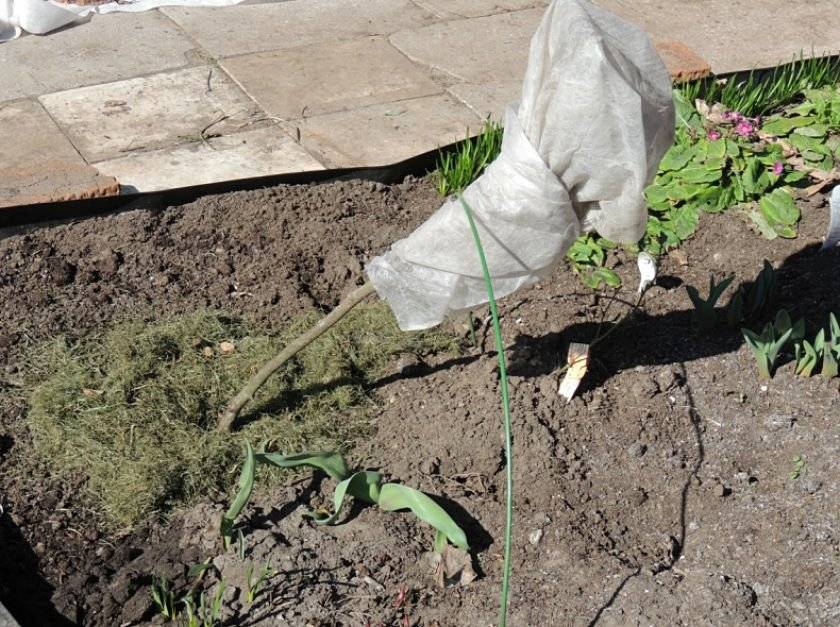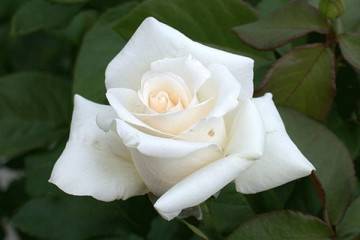Rose tree - features of growing a standard flower
Content:
The rose tree is no longer unusual in European countries. However, it appeared in Russia relatively recently. Initially, the plant was grown only in the southern regions of the country, but gradually, thanks to the work of breeders, it became possible to grow this tree in the central region.
What is a standard rose and how to create it
People who are far from floriculture do not know that a rose in the form of a tree is actually not a rose. An unusual shape is obtained by grafting roses of various varieties to the root shoot - the stem (it is called the trunk). Depending on its height, roses are obtained that grow as a tree in the garden, of different heights.
Advantages and disadvantages of such a rose:
| Pros of a standard rose | Cons of a standard rose |
| more abundant flowering than the stem version; | impossibility of reproduction; |
| increased winter hardiness; | problems with growing stock. |
| high decorative effect. |
Description of a rose in the form of a tree
Depending on the height of the trunk to which the rose is grafted, the following types of standard trees are distinguished:
- dwarf, whose height is only 30-50 cm;
- half-stem up to 80 cm high;
- ordinary stems, whose average height is 1.3 m;
- high-stemmed varieties are the tallest tree roses, the height of which can reach up to 3 m, and the branches are always drooping.
Most suitable varieties for tree formation
To the question of what is the name of a rose that grows like a tree, they give several answers, because the varieties that are used for the stock are different. Breeders distinguish 3 main types, each of which can include several varieties:
- Caninae (rosehip) is used more often than others, but has some disadvantages: slow growth, low degree of frost resistance, problems with reproduction;
- Synstylae is an unpretentious species with high immunity to diseases and pests, the ability to adapt to most soils. It is used to breed tall rose trees;
- Indicae is used only in regions where the climate is warm and mild, as it cannot tolerate cold and other climatic troubles. Its main advantage is that it can be grafted with roses of any type.
Princess de Monaco
The Princess of Monaco variety belongs to the hybrid tea group of roses. He has won many prizes at various international flower exhibitions. Description:
- flowers are creamy white with a pink border around the edge;
- the buds are quite thick, when they bloom, it seems that they have been dipped in bright pink paint;
- as it blooms, the pink color darkens and falls throughout the petal;
- flowers are densely double with a bright delicate aroma.
The Princess de Monaco is great to use for a stock option.
Jardins de Bagatelle
The Jardin de Bagatelle is also recommended for the creation of a standard tree. This is another variety from the hybrid tea group, the flowers of which are painted in a uniform delicate cream color with a subtle sweet aroma.
Marcel Pagnol
Marcel Pagnol bears another name - Scarlet Beauty, which was not chosen by chance and is ideal for this rose. And she, in turn, is ideal to grow a bright and spectacular standard tree. Description:
- the flower is recognized as one of the most beautiful and best-selling in the whole world;
- the buds are large, bright red, scarlet with a velvety shade;
- the shape of the buds is slim and elegant. This quality is retained even with full disclosure.
Catherine Deneuve
This is a variety that was bred relatively recently, but has already gained popularity. It is also used as a scion to create standard roses. The buds are bright pinkish-orange. They look very impressive and will bring brightness to any garden plot, even on the gloomiest, rainy day.
These are far from all varieties that are used as a standard rose, but they look very impressive and undoubtedly deserve attention.
Selection of standard rose seedlings
Stamp roses are preferable to buy in containers, because this is how they are more sensitive to lack of liquid. The minimum stem diameter should be 1 cm, for weeping high-stemmed roses - 2 cm.
The crown should already be of the correct shape and have several powerful branches. In the future, it will be possible to form a beautiful dense crown if 2 buds were inoculated at once on one stock.
The Europeans were more fortunate, in some nurseries 3 buds are engrafted there at once. Therefore, it makes no sense to buy a plant with only 1 bud, since as it grows, it will not be possible to form the crown shape.
If you buy a seedling in a pot, then the height of the flowerpot cannot be less than 25 cm. The plant itself should be easily removed from there, and the root system should entangle the entire earthen lump.
Signs of poor-quality planting and caring for a tree rose are:
- dry or waterlogged soil;
- the presence of weeds;
- the presence of moss on the surface of the substrate.
It is worth paying even more attention to the engraftment of a standard rose with an open root system. If buds have sprouted on such seedlings, or, moreover, young shoots have grown, it is better not to take such a plant. And if the florist is also a beginner, then you should look for that nursery where plants in pots will be sold.
How to plant a standard rose correctly
After the purchase, the florist faces the main task - how to plant and make a rose on a trunk correctly. Seedlings are planted only in spring. This is necessary so that they can grow over the summer, adapt, gain strength and prepare for wintering.
The plant is carefully removed from the container, and a reliable wooden stake is placed in place of the temporary support. In nurseries, flowers were watered very often, this should not be forgotten. The first few weeks they need to be watered more often, gradually accustoming them to a moderate amount.
Sequencing:
- Before planting the rose in the planting hole, a support is installed, the height of which will reach approximately the middle of the crown.
- The standard rose is not buried in the soil. The distance from its stem to the support should be about 10-15 cm.
- The bend at the base of the stem should be on the side opposite to the slope, that is, if the bend is to the right of the peg, then when covering it must be bent to the right. The side of the bend must be remembered by finding some landmarks.
- After planting is done, it is worth slightly compacting the soil and tying the bush to the support with loops at the base of the crown and a few centimeters above the soil level.
- The crown must be protected from drying out. It can be overlaid with damp moss or cotton wool and tied with breathable material that allows light to pass through. This tissue must be constantly moist until the first buds appear. This condition is very important for the formation of the crown and adaptation of the tree in a new place.
Features of caring for a tree rose for tree formation
In order for the standard plant to please with its appearance, and the neighbors asked the name of this gorgeous rose that looks like a tree, it must be properly looked after. Care directly depends on the variety of the grafted flower.
Watering rules and humidity
Watering should be carried out regularly with soft, well-separated water at room temperature. For some varieties, it will be useful to mulch the soil around the tree with natural materials, for example, moss. This will prevent moisture from evaporating quickly.
Top dressing and soil quality
Top dressing is carried out from the beginning of the growing season and continues throughout the entire period. For this, ready-made compositions of mineral and organic fertilizers for roses are used, which alternate. Top dressing is combined with watering and is carried out 1 time in 14 days (you can a little more often).
The soil can be different depending on the preference of the variety. But in any case, it should be loose and nutritious, it is good to let water and air pass through and have drainage. It is best not to plant flowers where groundwater is too close to the surface.
Loosening and mulching
Loosening is useful after each watering and feeding, but the procedure can be carried out less often. The main thing is to do it carefully, with a small hoe, so as not to hurt the roots of the tree. Moss, peat or sawdust are suitable as mulch.
Pruning
Special attention is paid to pruning when caring for standard rose trees, since it is she who gives the very desired shape. The main pruning is done in the spring. The exception is the varieties of the Rambler group, which bloom only once a season. They are pruned immediately after flowering.
Rose care in the winter
Wintering is a very important step in caring for a rose tree. With the wrong shelter or preparation for winter, all the works of the grower can go down the drain, and the plant will simply die. You need to prepare for this difficult period at the beginning of autumn, when you need to completely stop watering. In the second half of September, all leaves are removed from the rose. This procedure does not have to be done in one day, it can be done in several approaches.
The next thing is cropping. Hybrid tea varieties are pruned so that their branches remain no more than 30 cm long, while in floribunda and climbing varieties, shoots are preserved, only damaged branches and old buds are removed.
At the end of October, the soil around the tree is loosened and treated with a solution of ferrous sulfate. The stem is also sprayed with it. As soon as the first frosts begin, the plant needs to be covered. In fact, the tree itself, like the wild rose, which is its basis, is not afraid of frost, but the place of grafting should be insulated very carefully.
The crown is wrapped with a special insulation, and the trunk is bent to the ground. This is done very carefully so as not to break it. To do this, you can use special brackets or drive in a peg 20 cm from the base of the trunk and tie a stem to it. The crown should be as close to the soil as possible. It is covered with spruce paws, covered with leaves and another layer of spruce branches, which will not allow the leaves to scatter.
Growing problems, diseases and pests
In the process of growing a standard rose tree, it is important to notice the rose hips in time and remove them without delay. Otherwise, a more powerful bush will simply destroy the delicate grafted flower, drowning it out.
Basically, the immunity of such plants is quite high, since the immunity of the mother plant is able to endure any troubles on its own, despite the difficulties. But it is worth looking at the features of the grafted variety, at its possible diseases. The first time they are found, immediate processing is required.
How to deal with them
It is easiest to deal with diseases and pests in the initial stages. Diseases most often arise from improper care, and pests can be transferred from neighboring plants. Therefore, it is important to keep an eye on the entire flower garden.
Pests can be dealt with in two ways: mechanical and using chemicals. The first method is suitable for caterpillars, large beetles that are collected and destroyed. The second is for more dangerous parasites that suck out cell sap from the flower, while remaining almost invisible. It is good that a huge number of insecticides have now been created to help flower growers that can cope with any problems.
Growing a tall rose tree on your site is a real achievement of a florist that you can be proud of. Especially if it is the owner of a personal plot in the central part of the country. But in the south and in European countries, thanks to a milder and warmer climate, there are simply amazing examples worthy of admiration and causing dreams to do the same on your site. Most importantly, dreams are now becoming reality. It only takes a little effort.
